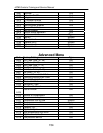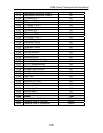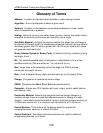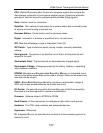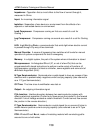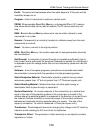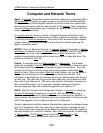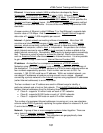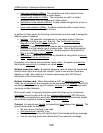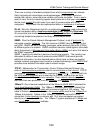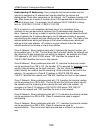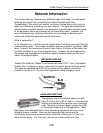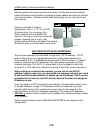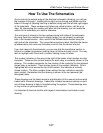
iCOM
Controls Training and Service Manual
• wide-area networks (WANs): The computers are farther apart and are
connected by telephone lines or radio waves.
•
campus-area networks (CANs): The computers are within a limited
geographic area, such as a campus or military base.
• metropolitan-area networks MANs): A data network designed for a town or
city.
•
home-area networks (HANs): A network contained within a user's home
that connects a person's digital devices.
In addition to these types, the following characteristics are also used to categorize
different types of networks:
•
topology: The geometric arrangement of a computer system. Common
topologies include a bus,
star, and ring. See the Network topology
diagrams in the Quick Reference section.
•
protocol: The protocol defines a common set of rules and signals that
computers on the network use to communicate. One of the most popular
protocols for LANs is called
Ethernet. Another popular LAN protocol for
PCs is the IBM token-ring network .
•
architecture: Networks can be broadly classified as using either a peer-to-
peer or client/server architecture.
Computers on a network are sometimes called
nodes. Computers and devices
that allocate
resources for a network are called servers.
Network cross-over cable: A specially designed cable tin which the receive and
transmit lines (input and output) are crossed. Used to connect two computers
together or hubs. Also called a null modem cable using either RS-232 port
connectors or RJ-45 connectors.
Network interface card: Often abbreviated as NIC, an
expansion board you
insert into a
computer so the computer can be connected to a network. Most NICs
are designed for a particular type of network,
protocol, and media, although some
can serve multiple networks.
Null-modem cable: A specially designed cable that allows you to connect two
computers directly to each other via their communications ports (RS-232 ports).
Null modems are particularly useful with
portable computers because they enable
the portable computer to exchange
data with a larger system.
Protocol: An agreed-upon
format for transmitting data between two devices. The
protocol determines the following:
• the type of error checking to be used
•
data compression method, if any
• how the sending device will indicate that it has finished sending a message
• how the receiving device will indicate that it has received a message
162



